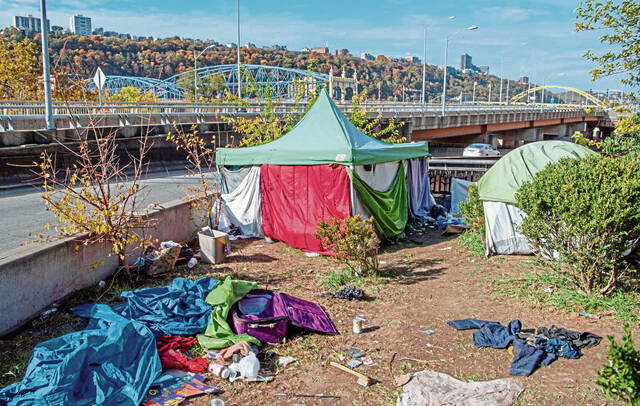Editorial: Will Innamorato's 500 houses plan work?
Some ailments are acute.
They are like an asthma attack — sudden, unpredictable and requiring an urgent and immediate response.
Others are chronic and demand steady and sustained supervision, like the steroid inhaler an asthmatic might take daily to strengthen the lungs and stave off an attack.
Acute and chronic don’t just describe medical conditions. They can also describe social ills.
Homelessness is not a single issue. It is a constellation of woes that come together to create a larger problem. In the Pittsburgh area, it has been increasingly obvious the problem is not going away. Allegheny County’s total unhoused numbers rose from 65 in 2021 to 169 in 2023, according to the county’s Department of Human Services. At the same time, average length of stay in homeless shelters has risen 40%.
In November 2022, two days before Thanksgiving, the Second Street Commons homeless shelter opened its doors for the first time. It had 95 beds and an additional 30 overflow beds. It rapidly filled to overflowing, leaving leaders and onlookers to note the issue was bigger than just a building.
That became even more obvious this week. Nineteen months after the shelter opened, it was shuttered by a fire, leaving about 175 people already homeless without even the shelter of last resort.
The acute problem — the fast first-aid option — is being addressed with temporary accommodations at the David L. Lawrence Convention Center. Acute problems need to be addressed quickly, just like the city of Pittsburgh did when a homeless encampment on the Mon Wharf flooded in January.
But you don’t solve a problem by only bandaging the bleeding. You have to stitch the wound, too.
There is more than one chronic issue at play with homelessness. There is poverty, mental illness, physical illness, disability and domestic violence. All of those need to be addressed systemically to permanently impact homelessness. That is complicated and difficult.
However, the one issue that may have the most direct effect may be affordable housing.
Allegheny County Executive Sara Innamorato presented an idea to address this chronic problem. She wants to house 500 people dependent on homeless shelters within 500 days. The idea isn’t a newer, larger homeless shelter. It’s permanent housing that is accessible and sustainable.
Is this ambitious? Yes. Is it unreachable? That remains to be seen. But $6.375 million from public and private sources already are attached. That is a good start.
There have been other ideas floated. In February, Pittsburgh City Council members advocated for the use of tiny houses instead of tent cities. The concept also came up in 2022. A Penn Hills project with tiny houses for homeless veterans was proposed in 2016.
The Second Street Commons fire illustrates the importance of confronting the acute issue of people who need a place to sleep tonight and the chronic problem of people who need a place to live tomorrow — and next week and next month and next year.
Remove the ads from your TribLIVE reading experience but still support the journalists who create the content with TribLIVE Ad-Free.

